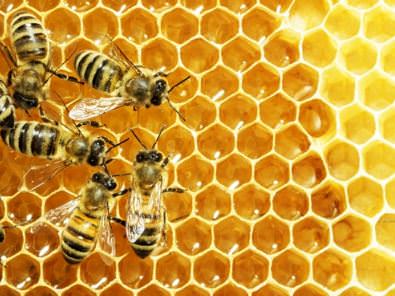Studies Outline Neonicotinoid Risk to Bees
Over the past few years, the bee population and activity has significantly decreased. This is a concerning issue to both environmentalists and farmers who rely on bees to pollinate their crops each year. Neonicotinoids, a class of insecticides that are chemically similar to nicotine, have been blamed as one of the culprits hurting the bee population.
While neonicotinoids, which include one of the most popular pesticides in the world, imidacloprid, have been known to have a negative effect on bees, there has been very little known about how bees interact with the pesticide and how it affects them. The European Union paused the use of neonicotinoids on flowering crops in 2013 while scientists researched its impact on bees.
On April 22, 2015, two studies related to this class of chemical's impact on bees were published in the journal Nature.
Bees get buzz from pesticide
One study, published by a team of researchers from Newcastle University and Trinity College Dublin, discovered that bees actually like nectar that was made with neonicotinoids better than those without.
Tests on bumblebees and honeybees showed that they were unable to taste or discern the difference among regular nectar and nectar produced with some of three common neonicotinoids: imidacloprid, (also sold as Admire®; Confidor®; Gaucho®; Merit®; 1-[(6-Chloro-3-pyridinyl)methyl]-N-nitro-2-imidazolidinimine) thiamethoxam (also sold as Actara®; 3-(2-Chloro-1;3-thiazol-5-ylmethyl)-5-methyl-1;3;5) and clothianidin (also sold as (E)-1-(2-Chloro-1;3-thiazol-5-ylmethyl)-3-methyl-2-nitroguanidin). The researchers concluded that this prevented bees from being able to avoid the pesticide and exposed them to higher amounts of the chemical.
Additionally, the scientists found that the bees preferred nectar solutions that contained neonicotinoids over just sugar mixtures. While they may not be able to taste the different between whether a nectar contains a neonicotinoid, the chemical may be giving the bees a cigarette-like buzz.
"Bees can't taste neonicotinoids in their food and therefore do not avoid these pesticides," lead researcher Geraldine Wright, Ph.D. said in a statement. "This is putting them at risk of poisoning when they eat contaminated nectar … Even worse, we now have evidence that bees prefer to eat pesticide-contaminated food. Neonicotinoids target the same mechanisms in the bee brain that are affected by nicotine in the human brain."
Scientists and environmentalists have commented on the study, saying it supports the EU's ban on the chemical and speculated that bees may become addicted to the insecticide as humans do to nicotine. Pesticide manufacturers and supporters don't agree with the finding, with Nick von Westenholz, CEO of the Crop Protection Association, telling the BBC that they're untrue.
"The latest studies in Nature must be seen in the context of ongoing campaign to discredit neonicotinoid pesticides, regardless of what the real evidence shows," he told the news source.
Impacting bees near canola
The second study published in Nature concerning bees and neonicotinoids was conducted by researchers from Lund University. The scientists looked at the impact of neonicotinoids on wild bees, which includes bumblebees and solitary bees, in relation to rapeseed or canola fields.
Neonicotinoids are used to treat flea beetle infestations in canola fields in Europe, but not since 2013's ban. The new findings, which focused on field experiments found that these pesticides negatively impacted growth reproduction among bees near canola fields. Additionally, the fields themselves saw fewer bees when treated with the chemical. Colony health was unaffected.
"The results show that it is inappropriate to use clothianidin on rapeseed", Thorsten Rahbek Pedersen, project manager at the Swedish Board of Agriculture, explained in a statement about the study. "We need alternative preparations and new cultivation methods if we are to continue growing spring canola in Sweden."
Bayer CropScience, which produces and originally developed many neonicotinoid insecticides told NPR's The Salt that the research doesn't demonstrate that there's a danger to bees in the wild from the pesticide, and that the data and methodology may be lacking or flawed.
More dangers than neonicotinoids
While these scientific studies outline the danger that neonictinoid pesticides may present to bees, other recent research explained that it's not the sole danger to bees. Published March 18, 2015 in the journal PLOS ONE, a report from the University of Maryland found that imidacloprid isn't the only risk to bees in the wild in a field study.
The research didn't say that insecticides had no impact on bees, but rather that there are other dangers to the insect that should also be considered. While neonicotinoids may present danger to bees in a lab setting, Maryland researchers said that at lower natural doses, they likely have a less significant risk.
CONTACT US
Tel: +44 (0) 151 649 4000
Email: info@greyhoundchrom.com
FOLLOW US
YOU MAY ALSO BE INTERESTED IN OUR NEWSLETTER











